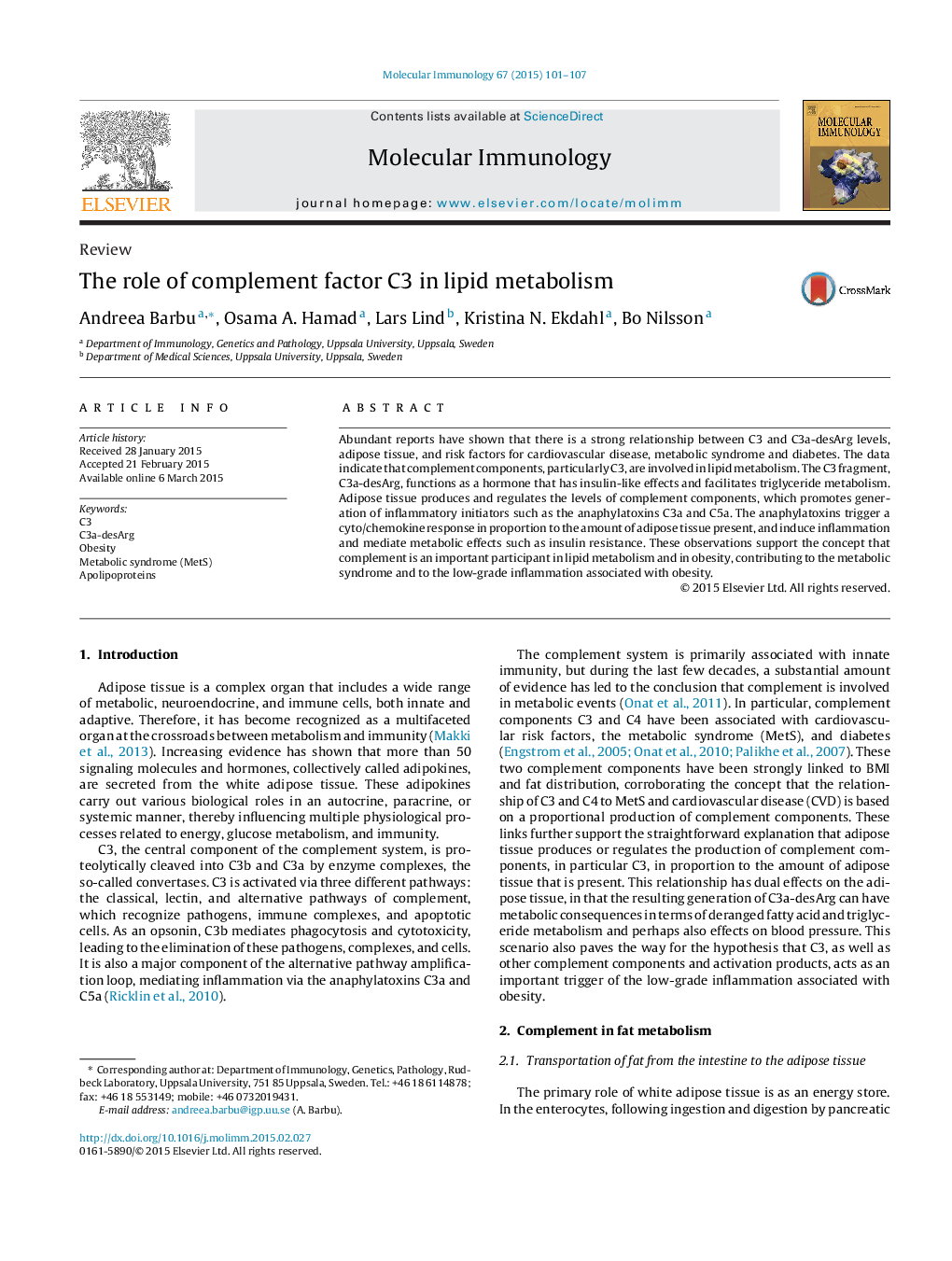| Article ID | Journal | Published Year | Pages | File Type |
|---|---|---|---|---|
| 2830769 | Molecular Immunology | 2015 | 7 Pages |
•Plasma C3 concentration correlates to BMI, fat distribution, blood pressure, MetS and diabetes.•C3a-desArg is generated in proportion to the C3 plasma concentration.•C3 and C3a-desArg have direct metabolic effects on adipocytes, hepatocytes and β-cells.•C3a-desArg possibly contributes to disturbed metabolism and obesity-linked low-grade inflammation.
Abundant reports have shown that there is a strong relationship between C3 and C3a-desArg levels, adipose tissue, and risk factors for cardiovascular disease, metabolic syndrome and diabetes. The data indicate that complement components, particularly C3, are involved in lipid metabolism. The C3 fragment, C3a-desArg, functions as a hormone that has insulin-like effects and facilitates triglyceride metabolism. Adipose tissue produces and regulates the levels of complement components, which promotes generation of inflammatory initiators such as the anaphylatoxins C3a and C5a. The anaphylatoxins trigger a cyto/chemokine response in proportion to the amount of adipose tissue present, and induce inflammation and mediate metabolic effects such as insulin resistance. These observations support the concept that complement is an important participant in lipid metabolism and in obesity, contributing to the metabolic syndrome and to the low-grade inflammation associated with obesity.
